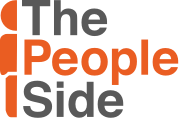TrendWatching is Trending
When I was 8 years old, I would play a game with my two brothers to see who could surprise each other most by unexpectedly jumping out from behind a door or a couch. My oldest brother received a toy periscope for his birthday that year and was secretly utilizing it to see around the corner at us. My other brother and I had no idea how he was so effectively anticipating our every move and could successfully surprise us again and again. Seeing around corners is not just a child’s game, it’s a very real leadership capability that you can practice.
The best leaders we work with understand that in the whirl and twirl of the VUCA (Volatile, Uncertain, Complex, and Ambiguous) world we find ourselves in, we must be intentional in building the capability of seeing around corners. The People Side calls this leadership capability “TrendWatching” which is this month’s focus Leadership Gamechanger Series.
Here Is What We Mean By “TrendWatching”
Wayne Gretzky, hockey Hall of Famer is famous for saying, “I do not skate to where the puck is, I skate to where it will be.” That’s anticipation. That’s seeing around corners.
It’s the leadership capability of persistently being on the look-out for opportunities or threats that are coming on the horizon that will shape your organization’s future.
It requires converting early insights into action so you can leverage the trend to your organization’s advantage and evolve based upon it. (i.e. observing changes in technology, listening or uncovering your customer’s unmet needs, seeing new patterns, etc.)
Why TrendWatching Is So Important
This leadership superpower enables future-savvy leaders to listen, anticipate, adapt, and implement the latest trends more quickly than others in order to make better strategic decisions for their organization.
Avoid being blindsided! If you don’t engage in this behavior, changes will appear seemingly without warning – like a sudden curve in the road that steers you away from the future you envisioned for your organization.
More confidently navigate an organization through frequent changes and curves in the road. This is one of the major leadership challenges of our time.
How To Be A TrendWatcher
1. Surround Yourself With Smart, Insightful People
Have you ever heard the saying, "If you're the smartest person in the room, you're in the wrong room"? Well, this is especially true if you are looking for the latest trends. Continuously build and maintain your own informal group of advisors. Network with people from different levels in the organization, in different industries, and who have different backgrounds than you. Seeking this diversity in your network will help you see things from another vantage point and test your perspective. You can help them in return.
2. Look In The Rear View Mirror
As Warren Buffett once said, “In the business world, the rear view mirror is always clearer than the windshield.” Spending time with colleagues reflecting on an external change that disrupted your industry or adjacent industry can be helpful. Pull the change apart looking for learnings not blame. Determine who/what were the catalysts that sparked the change. Finally, ask yourself, “Why did we miss seeing this? What were the implications to us? What can we learn from it? What are we missing now?”
3. Kick-Start Your Meetings with “The Word on the Street”
Take the first few minutes of your meetings to engage your team in a discussion about what they are hearing and seeing in your business/industry that is interesting – we call these “early insights.” This can include customer feedback, innovations or new solutions, emerging patterns, or repeatable issues/problems the team is addressing. Agree on implications/actions for the team or organization to take on these insights.
4. Take Advantage of Social Media
In addition to participating in formal professional associations and conferences, participate in virtual industry spaces as well. Seek out industry leaders, influencers, and groups on Twitter or LinkedIn to follow. Set up Push Notifications/Alerts on your phone to bring information to you. Use the Google Trends Website to analyze the popularity of the trend you are looking into. What can you learn and apply to your organization?
5. Put TrendWatching on Your Calendar
Let's be honest--we don't have unlimited time or the appetite to read through, listen, or watch every interesting bit of content that gets produced. Here are some ideas to help you choose and use your information intake wisely:
Listen to Your Customer. This is the most critical source of meaningful insights for any business leader. If you have to prioritize where to invest your listening energy and time, start here. What is on your customer’s radar and what do they see as their future needs?
Observe Your Competition. What is your competition doing that gives them an advantage? Where can you capitalize on your competition's weaknesses?
Review Research Reports/Publications (i.e. Forrester, Gartner, McKinsey, Deloitte, Financial Times, New York Times, Wall Street Journal, Economist, etc.)
Build a Daily Practice: Dedicate 10-30 mins a day to learning about new and emerging trends. What did you discover that you didn't know? Is this the beginning of a new trend? Lunch time or your daily commute can be a great opportunity for this practice! Read a book, listen to a TED Talk, or catch a podcast. Staying informed and connected will be a competitive advantage.
6. Spot A Trend, Then Stop and Reflect
Ask yourself these 2 reflection questions: (1) So what? What does this particular trend/information mean to me? For my industry? For my organization? (2) Now what? How can I turn this insight into action?
Remember! If you don’t have your finger on the pulse of what’s happening in your industry and world you are ripe for disruption. Today’s most successful leaders spend time TrendWatching.
So, Up Periscope!
What are your favorite ways to stay up to date on trends and seeing around the corner? Leave your best practices in the comments below…

